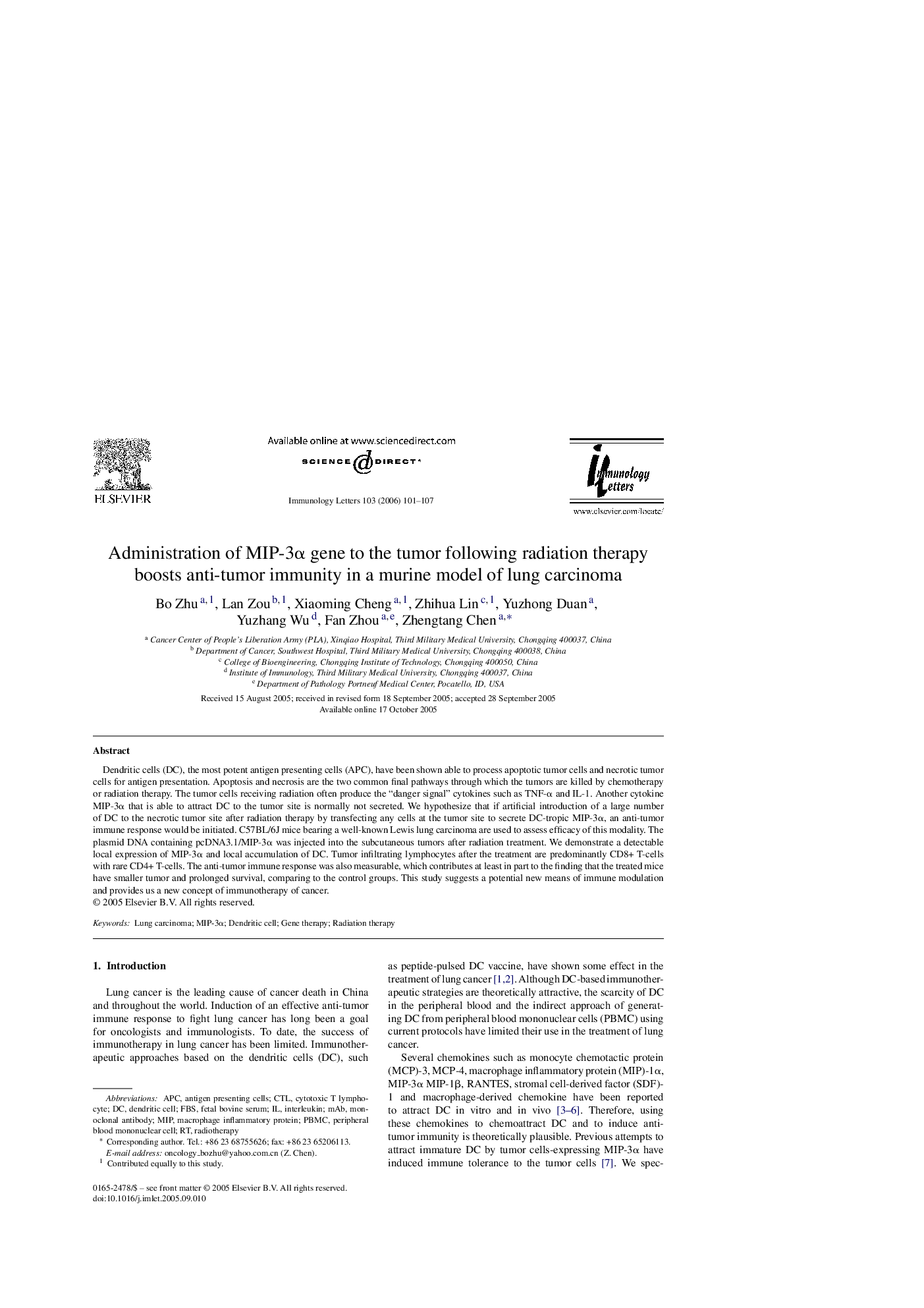| Article ID | Journal | Published Year | Pages | File Type |
|---|---|---|---|---|
| 3356516 | Immunology Letters | 2006 | 7 Pages |
Dendritic cells (DC), the most potent antigen presenting cells (APC), have been shown able to process apoptotic tumor cells and necrotic tumor cells for antigen presentation. Apoptosis and necrosis are the two common final pathways through which the tumors are killed by chemotherapy or radiation therapy. The tumor cells receiving radiation often produce the “danger signal” cytokines such as TNF-α and IL-1. Another cytokine MIP-3α that is able to attract DC to the tumor site is normally not secreted. We hypothesize that if artificial introduction of a large number of DC to the necrotic tumor site after radiation therapy by transfecting any cells at the tumor site to secrete DC-tropic MIP-3α, an anti-tumor immune response would be initiated. C57BL/6J mice bearing a well-known Lewis lung carcinoma are used to assess efficacy of this modality. The plasmid DNA containing pcDNA3.1/MIP-3α was injected into the subcutaneous tumors after radiation treatment. We demonstrate a detectable local expression of MIP-3α and local accumulation of DC. Tumor infiltrating lymphocytes after the treatment are predominantly CD8+ T-cells with rare CD4+ T-cells. The anti-tumor immune response was also measurable, which contributes at least in part to the finding that the treated mice have smaller tumor and prolonged survival, comparing to the control groups. This study suggests a potential new means of immune modulation and provides us a new concept of immunotherapy of cancer.
